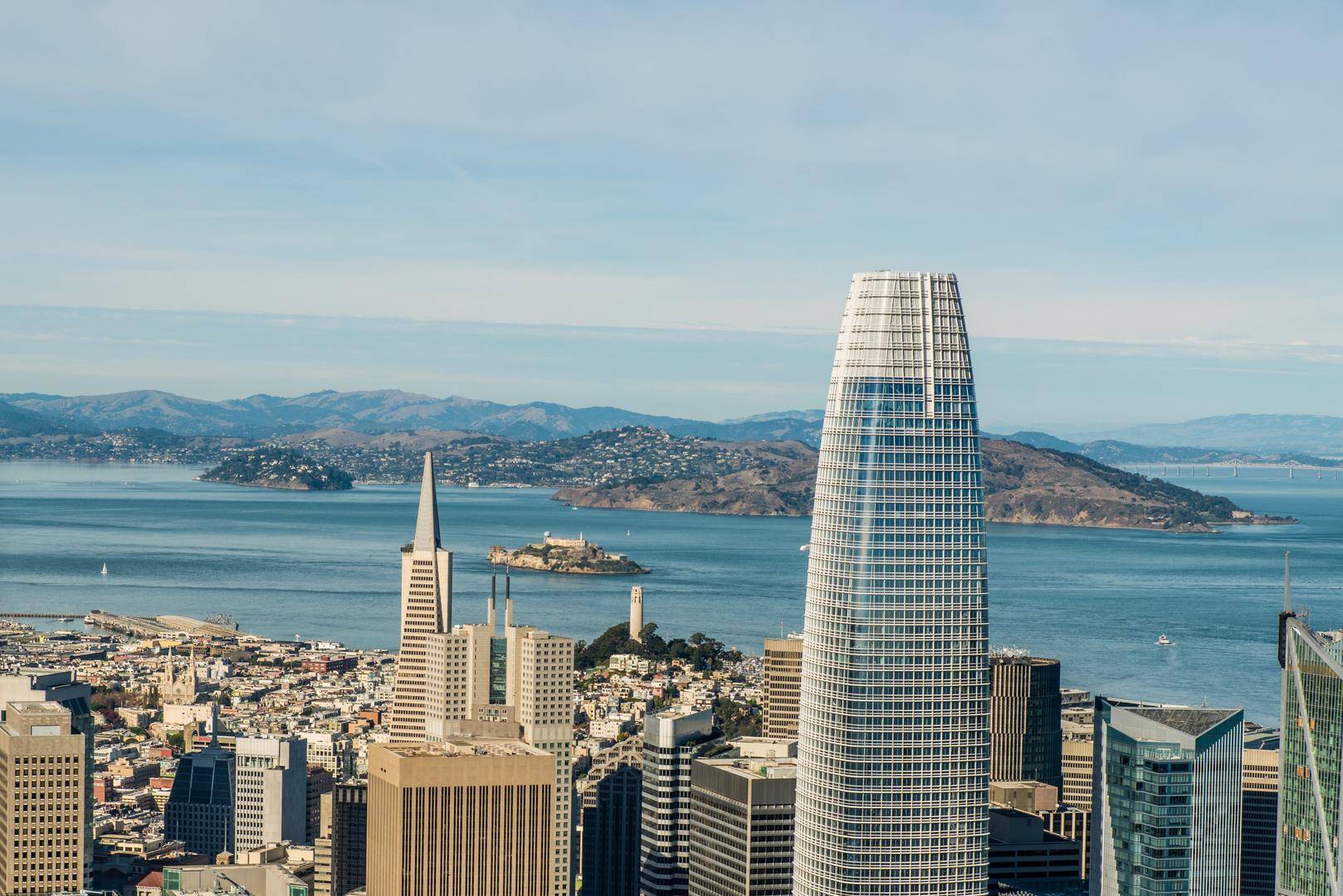| Height (feet) | Floors | ||
|---|---|---|---|
| Salesforce Tower | San Francisco | 1,070 | 61 |
| Wilshire Grand | Los Angeles | 1,100 | 73 |
How does the Salesforce Tower compare to the Wilshire Grand in height?
The Wilshire Grand is slightly taller than the Salesforce Tower, standing at 1,100 feet compared to Salesforce’s 1,070 feet. This height difference gives Wilshire Grand an edge in terms of overall stature within its skyline.
| Height Comparison | Salesforce Tower | Wilshire Grand |
|---|---|---|
| Height (feet) | 1,070 | 1,100 |
| Floors | 61 | 73 |
What architectural features define these skyscrapers?
Both towers exhibit unique architectural styles that reflect their cities’ identities. The Salesforce Tower features a tapering design with a glass façade that enhances energy efficiency. In contrast, the Wilshire Grand boasts a striking curved glass exterior with a spire that adds to its height.
| Architectural Features | Salesforce Tower | Wilshire Grand |
|---|---|---|
| Design | Tapering form with glass façade | Curved glass exterior with spire |
| Sustainability | LEED Platinum certified | Energy-efficient design |
Why are these buildings significant to their cities?
The Salesforce Tower represents San Francisco’s status as a technology hub and a center for innovation, housing major tech companies like Salesforce. The Wilshire Grand symbolizes Los Angeles’s ambition as a global city with mixed-use spaces that contribute to urban vibrancy.
| Significance | Salesforce Tower | Wilshire Grand |
|---|---|---|
| Economic Impact | Headquarters for tech companies | Mixed-use development enhancing urban life |
| Cultural Identity | Represents tech-driven economy | Embodies LA’s diverse culture |
What future developments are planned for LA and SF skylines?
Both cities have ambitious plans for future developments aimed at enhancing urban living. In San Francisco, projects include additional mixed-use towers near transit hubs. In Los Angeles, plans for new high-rises focus on sustainability and community integration.
| Future Developments | San Francisco | Los Angeles |
|---|---|---|
| Planned Projects | Mixed-use towers near transit hubs | Sustainable high-rises |
| Urban Integration | Focus on community spaces | Enhancing public transport access |
Buy Wholesale Battery Tips
For businesses looking to purchase wholesale lithium or lead-acid batteries, Redway Battery is an excellent choice due to its extensive experience in OEM orders and custom solutions. To make OEM orders from a reliable manufacturer like Redway Battery:
- Identify your specific requirements (capacity, voltage).
- Contact Redway’s sales team with your specifications.
- Review their proposed solutions and pricing.
- Approve samples before mass production begins.
Industrial News
The architectural landscape continues to evolve as cities like Los Angeles and San Francisco embrace innovative designs and sustainable practices in new constructions. The competition between iconic structures not only enhances city skylines but also reflects economic growth and cultural identity.
Redway Expert Views
“Skyscrapers like Salesforce Tower and Wilshire Grand not only define city skylines but also symbolize economic aspirations,” states an expert at Redway Battery. “Their designs reflect a commitment to sustainability while meeting modern urban needs.”
FAQ Section
- Which building is taller: Salesforce Tower or Wilshire Grand?
Wilshire Grand is taller at 1,100 feet compared to Salesforce Tower’s 1,070 feet. - What architectural style characterizes each building?
Salesforce Tower features a tapering glass design, while Wilshire Grand has a curved glass façade with a prominent spire. - Why are these buildings important to their respective cities?
They symbolize economic growth and cultural identity; Salesforce represents tech innovation while Wilshire Grand reflects LA’s diversity. - What future developments can we expect in these cities?
Both cities plan new mixed-use developments aimed at enhancing urban living and sustainability.



